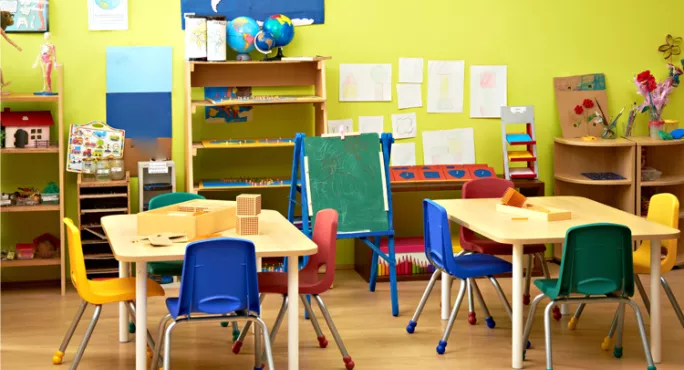- Home
- EYFS: 6 ways we adapted our teaching during lockdown
EYFS: 6 ways we adapted our teaching during lockdown

I’m always an early bird arriving in school (I like to avoid the photocopier queues and enjoy the hush before the school day starts), so I am used to a quiet start.
However, I recently took my turn on the rota and found myself in school for the first time since it closed.
Walking into the building was a very surreal experience. I arrived to find a completely empty car park and eerily silent corridors; I didn’t see a soul for quite some time.
To my relief, two other members of staff, including the headteacher, eventually arrived, bringing the grand total of teaching staff to three.
I spent my day teaching a class of five children. It was certainly a very different teaching experience and, like many other teachers across the country, I am only just starting to adapt to this new normal.
It already feels like a long time ago that we all tuned in to hear the announcement that schools would close, which was immediately followed by a steady flow of message alerts on my phone. Everyone was full of questions: How will this work? How many staff will we have in school? How many children? How on earth can we get the children to socially distance?
We are still working on that last one.
As an early years lead with responsibility for a large number of children, I have had to find a way to juggle the rotas and planning. There has been a need to balance time and effort between the children in school, the children at home and my staff team.
Coronavirus: How have EYFS teachers adapted?
It hasn’t been easy, but over the past few weeks, we have found our rhythm as a team. We have developed a way of working and adapting our practice to the best of our ability. We have tried to maintain the key EYFS principles as much as possible.
So, how have we organised this new way of working? And what were the key decisions?
1. We merged the EYFS classes
The most obvious way forward seemed to be to merge nursery and reception, creating one EYFS class, in one space. I have always been interested in the idea of a foundation unit and the benefits of peer learning, so we initially modelled our new practice on this idea. The children come together in a shared environment and share learning experiences.
2. We merged the EYFS team
I created a rota which included all of our EYFS staff, divided into three smaller teams. Each mini-team includes a teacher and a teaching assistant from both nursery and reception. At least one member of each team is trained in paediatric first aid to meet EYFS statutory requirements.
The teams work on a three-week rotation of plan; teach; rest.
3. We have shared responsibility
To avoid the complication of having too many different elements of planning responsibility, we decided that everyone will share planning and teaching duties for the whole phase. So both nursery and reception teachers plan for all EYFS children - including those children learning from home - when it is their turn on planning week. We work collaboratively as much as possible.
4. We work with a single topic
We felt a need to simplify our planning by working with one topic for both nursery and reception, (currently minibeasts).
The topic is the same for the children learning at home.
However, we are still able to adapt for learners of different ages and stages. The planning is now kept loose for flexibility as we have realised that our cohort of children in school changes from day to day.
5. We use Tapestry
Tapestry is our main ‘hub’ of communication. It keeps parents and staff connected. I have written before about how much I love Tapestry, but it really is invaluable during this time.
All staff can regularly log in and see how the children are getting on with their home learning, as well as keeping up with children’s progress at school.
We love the new ‘memos’ feature which we use to upload our home learning activities for families.
6. We try to be flexible - and positive
It has been really important to recognise that flexibility is key. I have tried as much as possible to promote this thinking within my team. We have found that some strategies have worked well, but lots of things have needed adjustment.
Overall, our approach has been a positive example of how the EYFS phase can work together in the most unusual circumstances. The experience has offered an opportunity for teaching staff to work across the whole phase collaboratively, developing our skills across the full age range and strengthening relationships within a wider team.
Throughout these difficult circumstances, I am fortunate to have a team that will give things a go and keep on smiling - however strange it may feel, for however long.
Helen Pinnington is early years foundation lead at St Thomas More’s Catholic Primary School in Bedhampton, Hampshire.
Keep reading for just £1 per month
You've reached your limit of free articles this month. Subscribe for £1 per month for three months and get:
- Unlimited access to all Tes magazine content
- Exclusive subscriber-only stories
- Award-winning email newsletters



